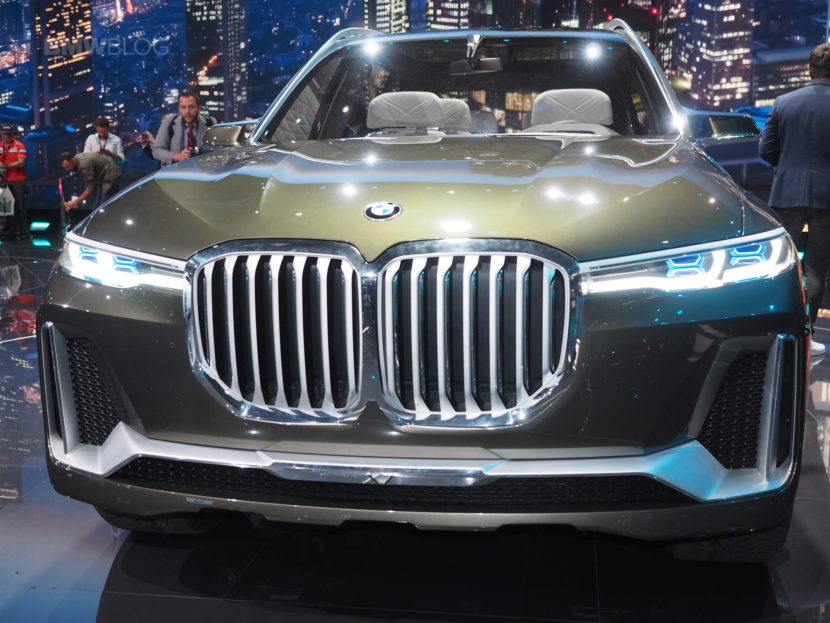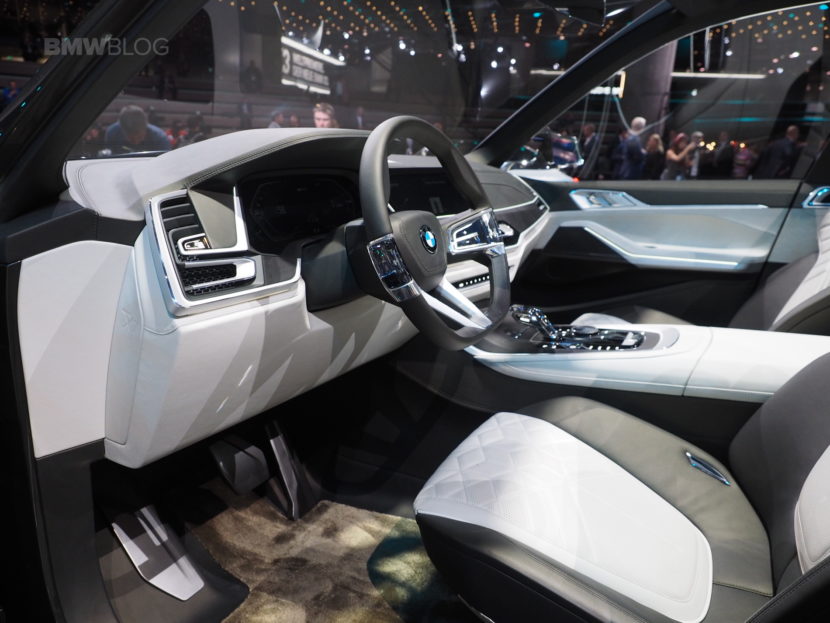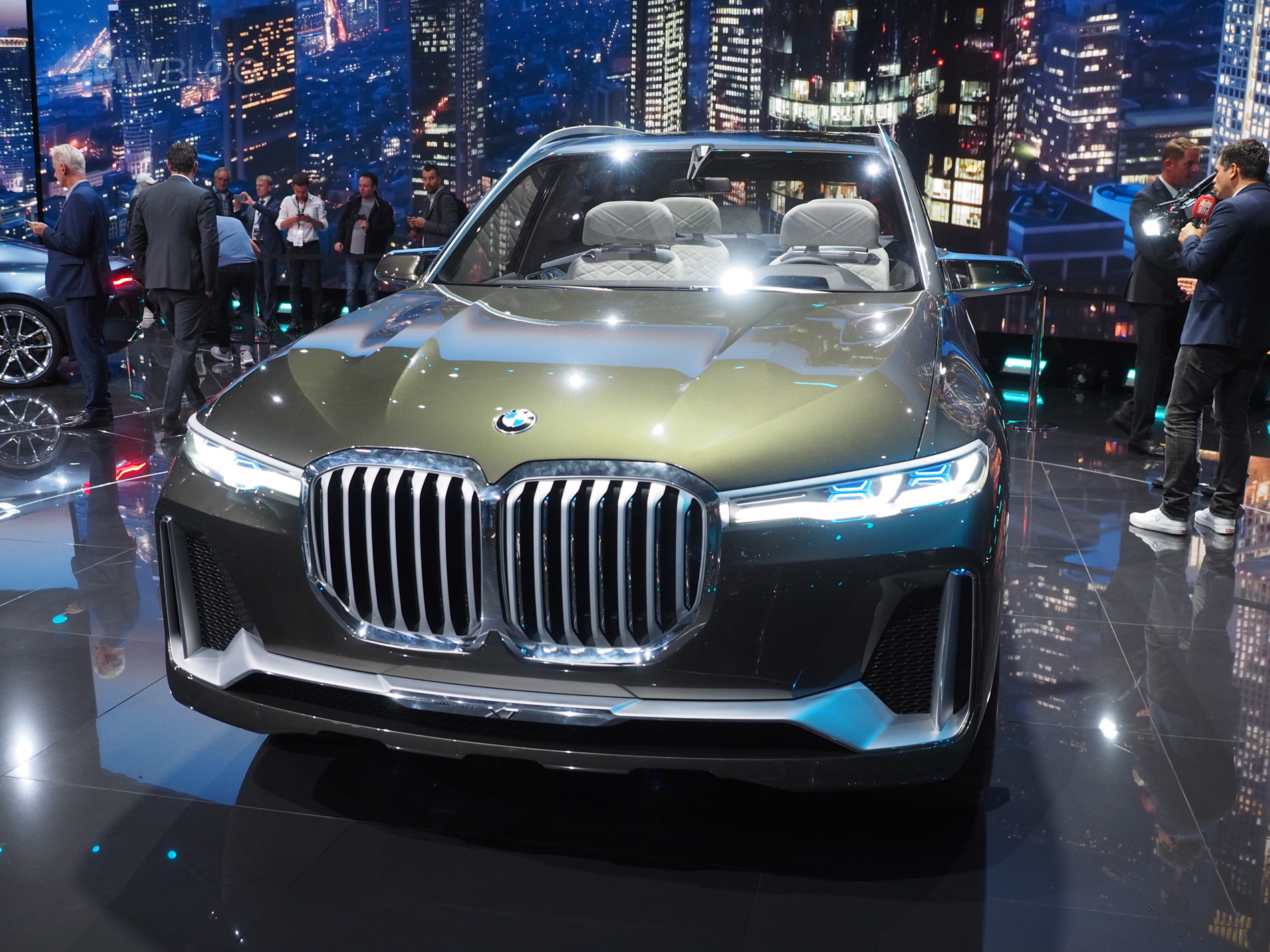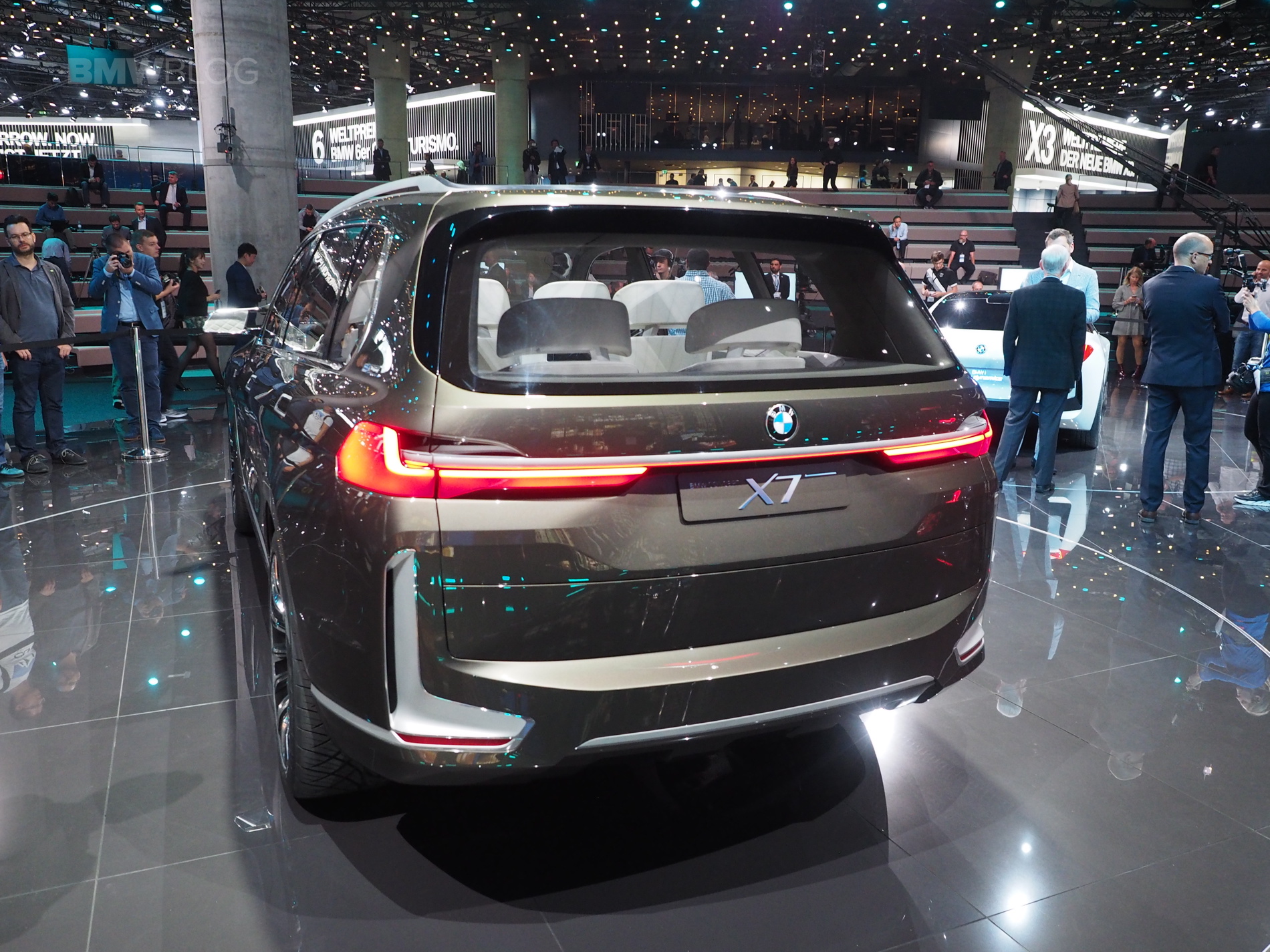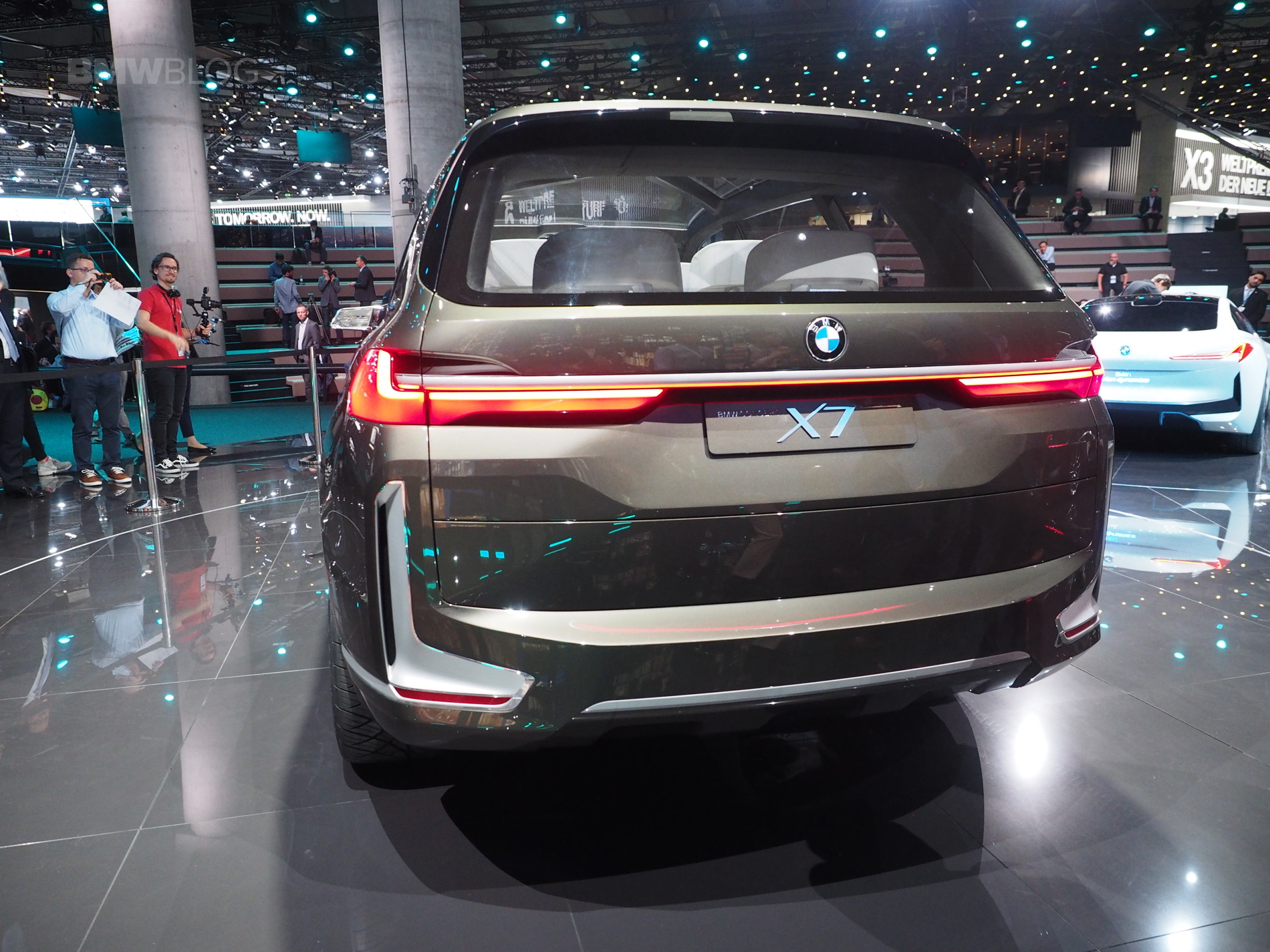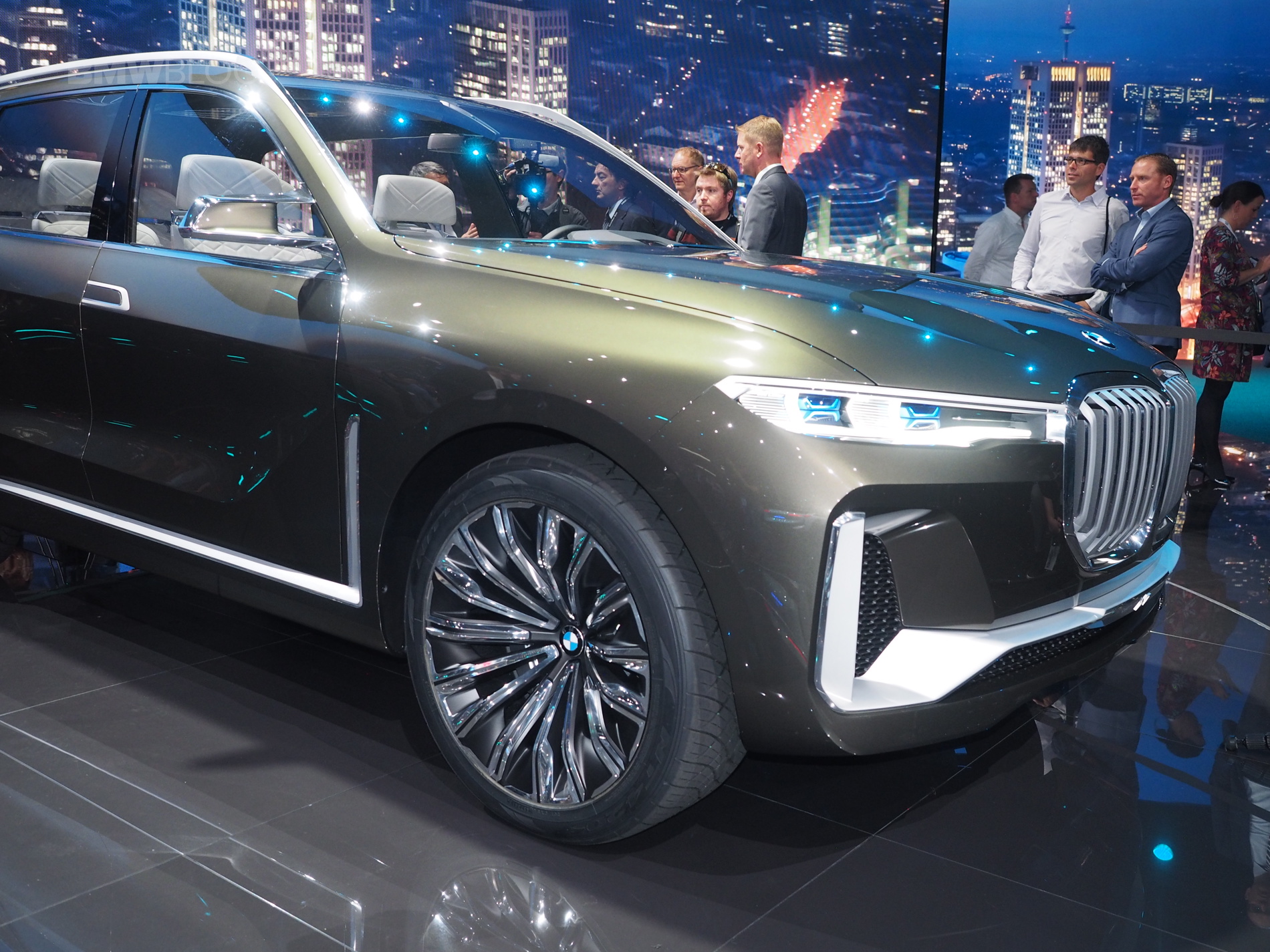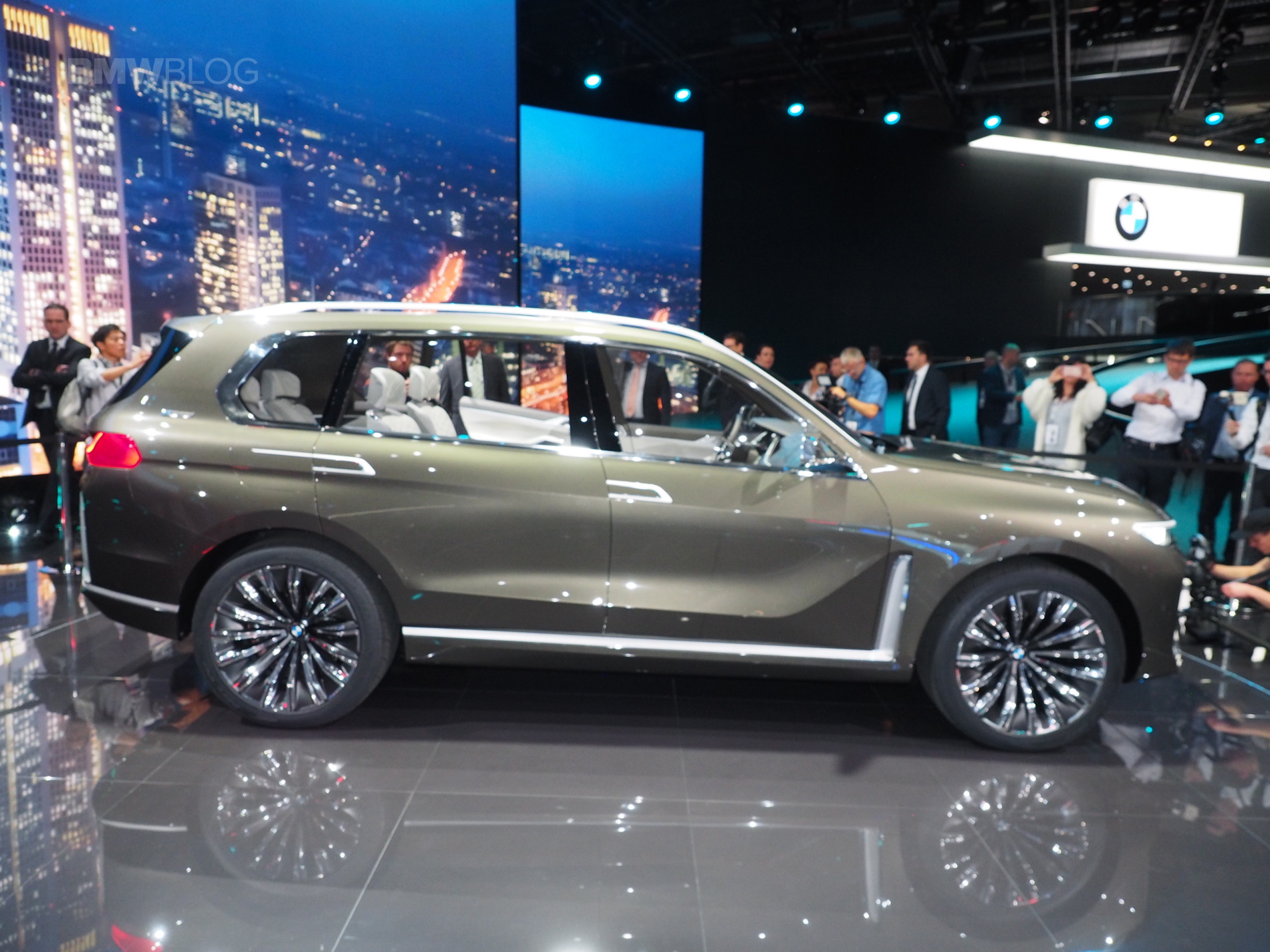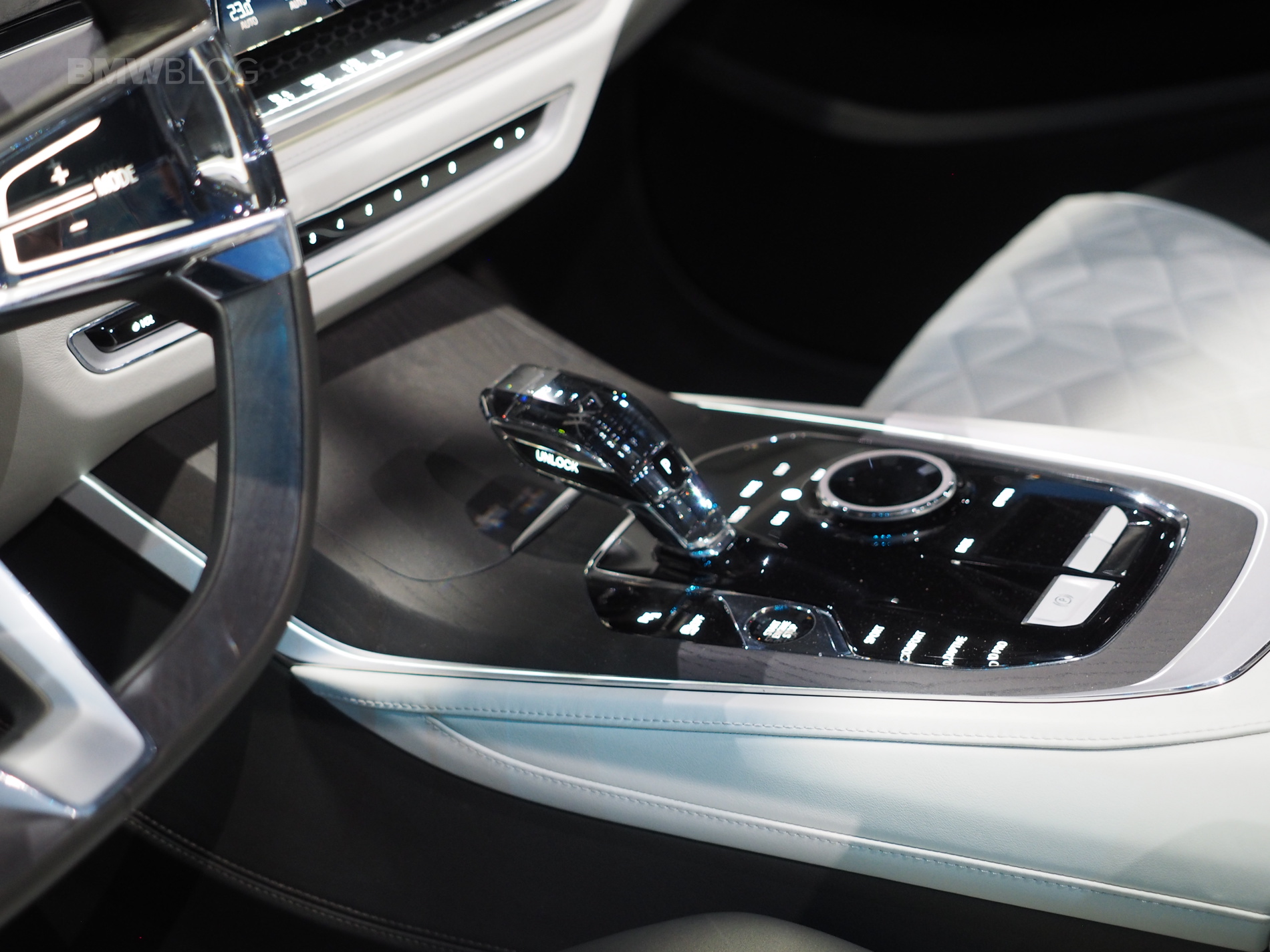BMW’s largest and most luxurious SUV to date made its world debut last week at the 2017 Frankfurt Auto Show. Presented in concept form, the X7 was received with mix impressions, mostly related to its front-end design which is extremely polarizing. BMW is trying to signify how imposing the new X7 is and seems to be doing so in almost a Rolls Royce sort of way. Up until now, the largest BMW SUV you could buy was the X5. With a third row as an option, the X5 was never really a seven-seater.
Now, the BMW X7 will be the flagship luxury SUV in the Bavarian lineup and it will contend with cars like the Mercedes-Benz GLS-Class and even the Range Rover Autobiography.
BMW CEO Harald Krueger has high expectations for the new X7. “We are targeting to be the No. 1 in our [large luxury SUV] segment,” he said. “Mercedes was quite a long time alone in that segment. And I like the competition that we bring.”
The full-size, three-row X7 will be one of the biggest BMWs produced, and it has a grille to match. It’s tall and the height is emphasized by the very sleek headlights. The laser lights have “X” designs, and this is the first BMW X model with perfectly round wheel arches. Inside the BMW X7 Concept, you’ll notice many features that are reminiscent of the BMW 8 Series Concept’s cabin. The futuristic steering wheel, iDrive controller, glass shift lever and fully digital gauge cluster all look either plucked straight from the 8 Series Concept or at least inspired by it. Whereas the exterior of the X7 Concept is all about being sophisticated, yet imposing, the interior is all about high-tech minimalism.
While BMW has yet to release full details of the X7’s powertrain other than it will feature a TwinPower turbo petrol engine allied with its eDrive technology, but we can assume this will be the 740e’s 2-liter set up with a combined output of 322 hp and the ability to travel up to around 20 miles on electric power alone. As befits the X7’s luxury bent no doubt other engines will be available including the 3-liter diesel and the company’s 4.4-liter twin-turbo V8.


